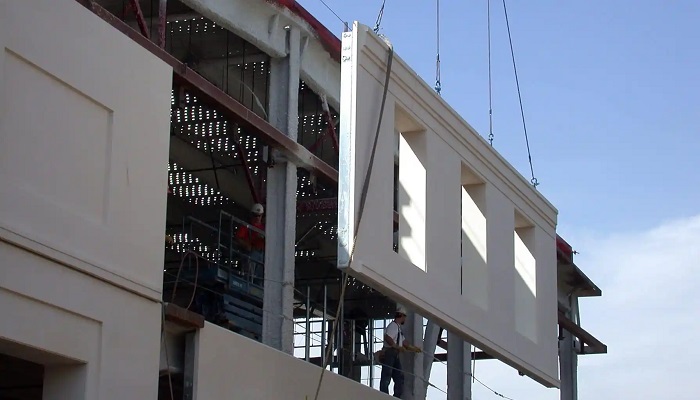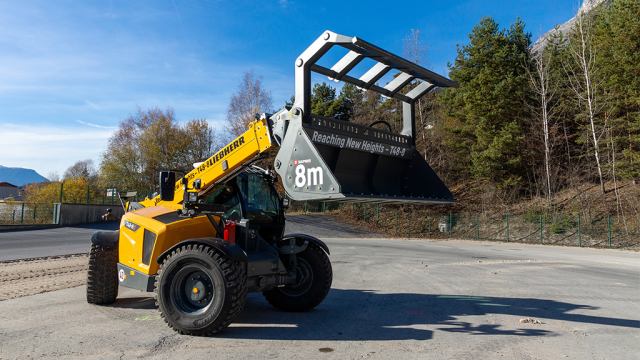Understanding the Role of Precast Concrete in Construction
In the ever-evolving world of construction, innovative methods and materials are continually being explored to improve efficiency, cost-effectiveness, and durability. One such material that has proven invaluable in modern construction is precast concrete. Unlike traditional concrete that is mixed and cured on-site, precast concrete is manufactured in a controlled factory environment before being transported to […] The post Understanding the Role of Precast Concrete in Construction appeared first on World Construction Today.

In the ever-evolving world of construction, innovative methods and materials are continually being explored to improve efficiency, cost-effectiveness, and durability. One such material that has proven invaluable in modern construction is precast concrete. Unlike traditional concrete that is mixed and cured on-site, precast concrete is manufactured in a controlled factory environment before being transported to the construction site for installation. But what makes precast concrete so beneficial, and how does it contribute to the construction process? Let’s delve into the ins and outs of precast concrete.
Understanding Precast Concrete
Precast concrete refers to concrete structures that are molded and cured off-site, typically in a factory setting. These concrete elements, which can range from simple slabs and walls to more complex shapes, are then transported to the construction site where they’re assembled to form a building structure. Precast concrete offers numerous benefits over traditional on-site concrete construction, which we’ll discuss further in this article.
Efficiency and Precision
One of the significant advantages of precast concrete is the level of efficiency and precision it brings to construction. The use of molds allows for the production of uniform pieces that can be easily fitted together on the construction site, reducing the need for time-consuming measurements and adjustments. In addition, since precast concrete pieces are cured in a controlled environment, factors like temperature and humidity, which can affect the quality of the concrete, are effectively managed. This ensures the creation of high-quality, durable concrete pieces.
Cost and Time Savings
The use of precast concrete can result in substantial cost and time savings. The factory production process allows for the bulk manufacturing of pieces, which can lead to economies of scale and lower overall costs. Furthermore, the faster production times and the ability to work on different parts of a construction project simultaneously can significantly reduce the project timeline.
Durability and Maintenance
Precast concrete is renowned for its durability. It is highly resistant to weather conditions, fire, pests, and even seismic activities, making it an excellent material for various construction projects. Additionally, precast concrete requires minimal maintenance, which can lead to long-term savings.
Versatility and Aesthetics
Precast concrete offers impressive versatility. It can be molded into a vast array of shapes and sizes, making it suitable for various architectural designs. Additionally, features such as color and texture can be integrated into the precast pieces, offering an aesthetic advantage over traditional concrete.
Sustainability
In terms of sustainability, precast concrete scores high. Its production process generates less waste compared to traditional on-site concrete construction. Moreover, the material’s durability and energy efficiency contribute to its overall environmental friendliness.
The Role of a Precast Concrete Plant
A precast concrete plant plays a crucial role in this process. They have the equipment, expertise, and controlled environment necessary to produce high-quality precast concrete pieces. These plants ensure that the concrete is mixed to the right proportions, poured into the appropriate molds, and cured under optimal conditions. By doing this, they provide a level of consistency and quality that would be difficult to achieve in a traditional on-site construction environment.
Future Trends in Precast Concrete
As we continue to seek improvements in construction methods, the role of precast concrete is expected to grow even further. New developments in the field, including the use of advanced materials and technologies, are poised to enhance the performance and potential applications of precast concrete. The trend towards more sustainable and resilient buildings is likely to drive increased adoption of precast concrete. Meanwhile, ongoing research and innovation at precast concrete plants promise to unlock new possibilities in design and functionality, reinforcing the value of precast concrete in tomorrow’s construction landscape.
In summary, the advantages of precast concrete are numerous and profound, playing a significant role in reshaping the construction industry. From efficiency and precision to durability and sustainability, the benefits it offers are crucial to meeting the diverse demands of modern construction. The pivotal role of a precast concrete plant in this process cannot be understated, as it ensures the production of high-quality, uniform, and customized concrete elements. As we look to the future, we can anticipate further growth and innovation in the field of precast concrete, solidifying its place as an invaluable asset in construction.
The post Understanding the Role of Precast Concrete in Construction appeared first on World Construction Today.

 machineryasia
machineryasia 






